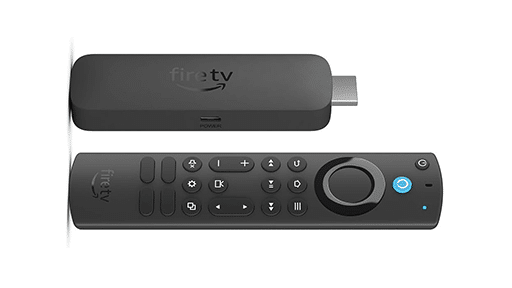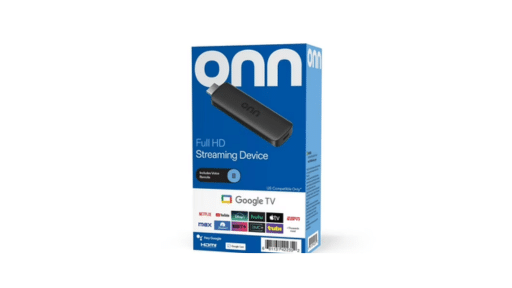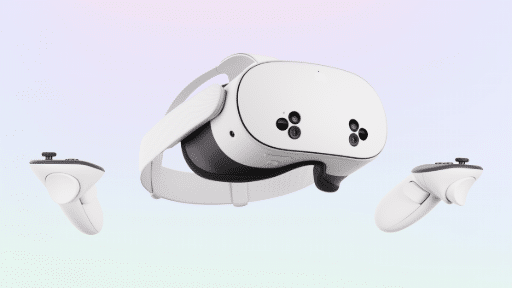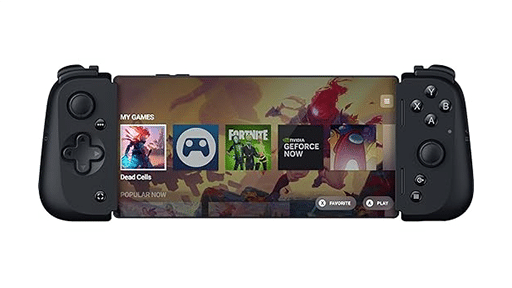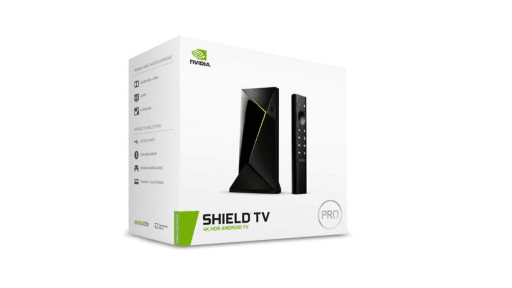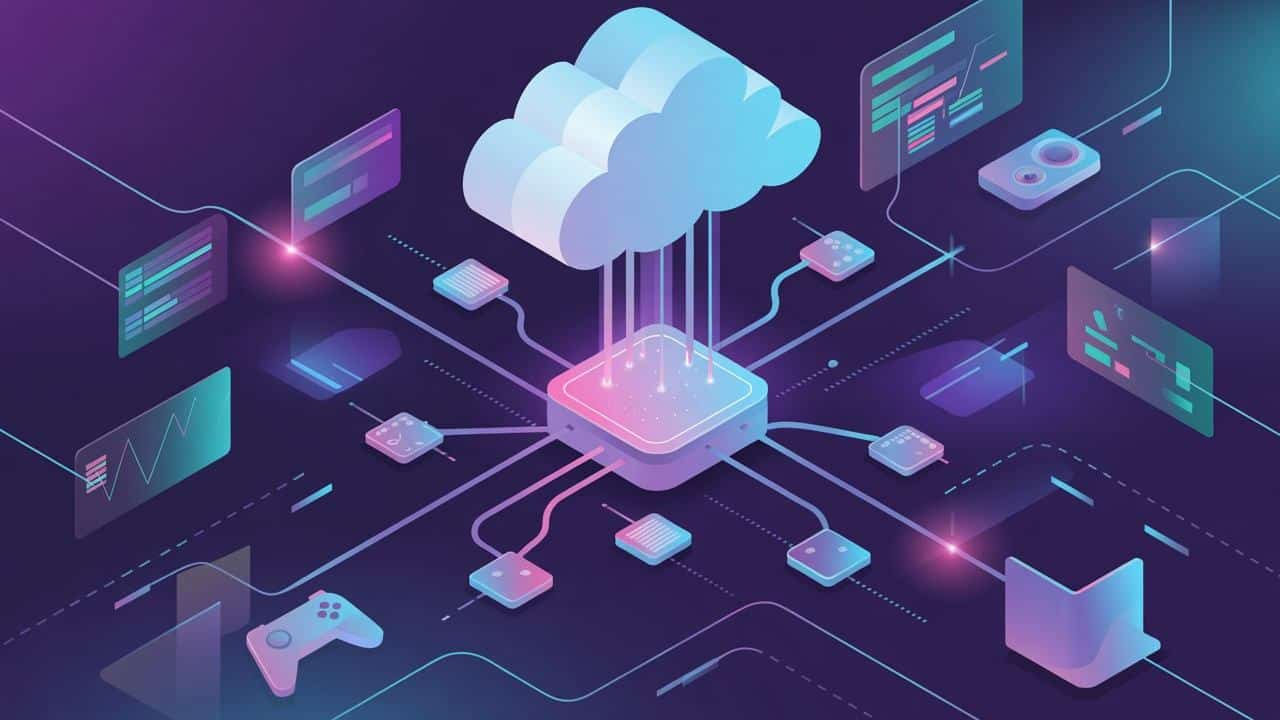
Who the Leaders Are
Omdia’s 2025 Market Radar lists AWS, Microsoft Azure, Google Cloud, and Tencent Cloud as the current leaders in cloud platforms for gaming. Each of these companies supports a wide range of game development needs, including game servers, LiveOps, analytics, and AI-powered services.
All four offer advanced capabilities across nearly every category Omdia measured. This includes multiplayer services, AI and machine learning support, and integration tools that help developers connect different services together. Microsoft and AWS, in particular, show strong coverage across all areas, while Tencent and Google follow closely behind.
The report also adds a new category this year: AI and machine learning. Omdia notes that all four leaders are investing in tools that support AI-driven features, which are becoming more important for developers across genres and platforms.
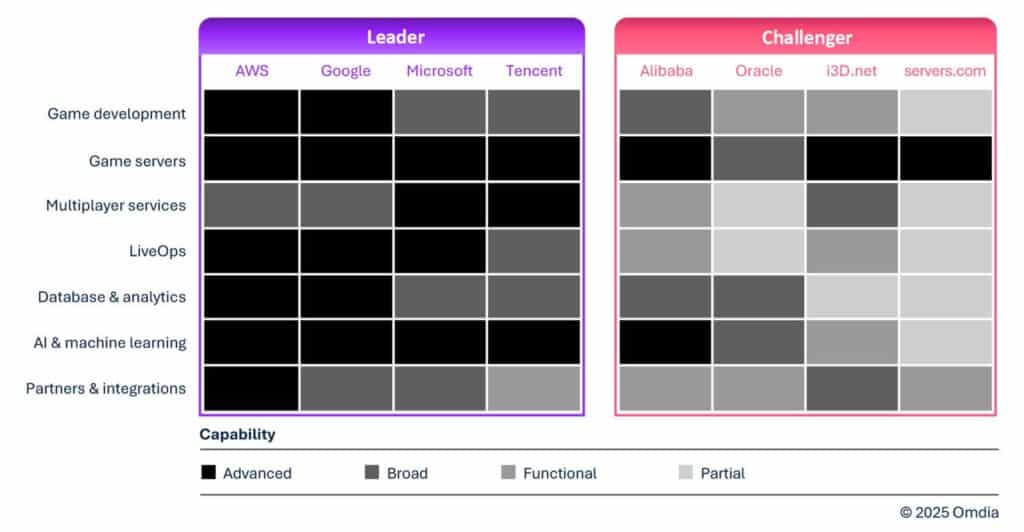
Challengers and Hybrid Growth
While the major cloud platforms lead globally, the report also highlights growing competition in specific regions. Tencent Cloud continues to expand its reach, but Alibaba Cloud is becoming a strong competitor in the Asian market. Regional dynamics now influence how studios choose their infrastructure partners.
The report also points to a growing trend in hybrid strategies. Some game studios are combining hyperscalers like AWS or Azure with specialized bare metal providers such as i3D.net and servers.com. This approach gives studios more control over performance, especially for latency-sensitive games or large-scale live service projects.
These hybrid models reflect a shift in how game developers think about infrastructure. Instead of relying on a single provider, studios are mixing services to meet the technical and geographic demands of their games.
AI’s Rising Role
One of the biggest additions to this year’s Market Radar is the new category focused on AI and machine learning. According to Omdia, support for AI use cases is now a key factor for game studios choosing a cloud provider.
Each of the major platforms, AWS, Microsoft Azure, Google Cloud, and Tencent Cloud offers AI tools that help developers automate testing, generate content, or improve analytics. These tools are already being used in different parts of game development, and their importance is expected to grow over the next few years.
Omdia’s forecast shows that the cloud-enabled solutions market will reach $20.9 billion by 2029, with AI named as a major driver of that growth. As demand increases, cloud platforms that support more advanced AI workflows may have an edge when it comes to serving the needs of game studios.
What It Means for Gamers and Cloud Gaming
Most of us never see the cloud platforms behind our favourite online games, but we rely on them every time we connect. Game servers, multiplayer systems, real-time updates, and performance analytics all run on cloud infrastructure. These services help keep games running smoothly across regions, devices, and time zones.
Cloud gaming also depends on this same backend. Services like Xbox Cloud Gaming, Amazon Luna, PlayStation Cloud Gaming, GeForce NOW, and others stream games that are hosted and managed using many of the platforms mentioned in the report. Strong cloud infrastructure ensures lower latency, better matchmaking, and smoother updates, especially for live service games.
As AI tools grow more common, they may also change how content is delivered or how online features are managed. While these developments are still evolving, the foundation is already in place. Cloud platforms are already essential to the gaming experience, even if most people never notice.
As always, remember to follow us on our social media platforms (e.g., Threads, X (Twitter), Bluesky, YouTube, and Facebook) to stay up-to-date with the latest news. This website contains affiliate links. We may receive a commission when you click on these links and make a purchase, at no extra cost to you. We are an independent site, and the opinions expressed here are our own.


